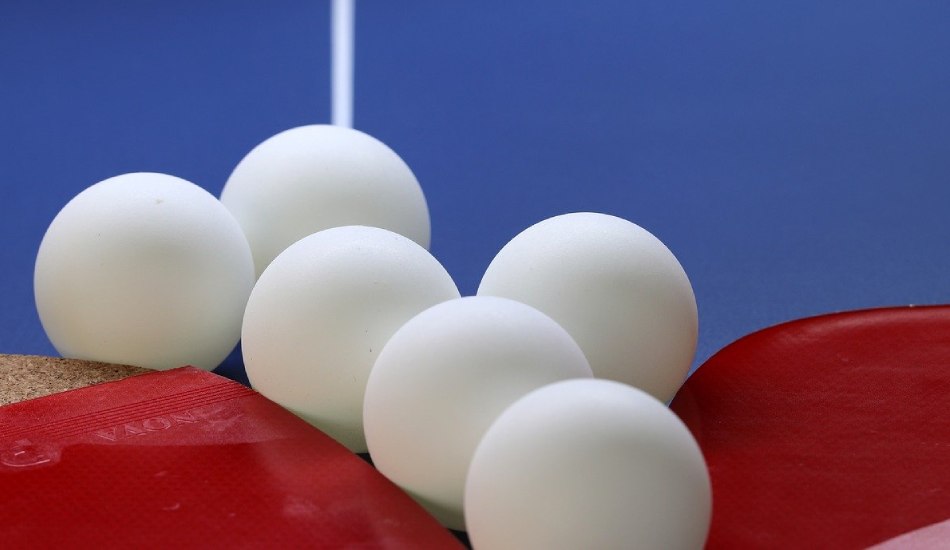Table of Contents
Do you play table tennis or love watching the game? Have you ever wondered what table tennis balls are made of? Well, we are here to explain to you the exact process of manufacturing the best ping pong balls.
The Material Used in Ping Pong Balls
Essentially, the ping pong balls’ materials are celluloid, a component of nitrocellulose and camphor. They also use the same material in photographic-films.
But in some other balls, they use plastic polystyrene; even though the poly balls are environmentally friendly, the celluloid balls are cheaper and more durable considering their usage.
Though the celluloid balls are cheaper and durable, it has its cons; like the celluloid balls are highly flammable. Thus, plastic balls have a diameter of 40+ while celluloid balls have a diameter of 40 printed on them.
Steps Involved in the Making of Ping Pong Balls
Now we know what ping pong balls are made of. However, before it reaches the players, it has to go through several steps to qualify as competition-ready balls. The process of ping pong ball manufacturing has six steps.
- They start by weighing the celluloid sheets, both flat and circular, to ensure that after they shape the sheets, they maintain the same weight. Then, they soak them in alcohol to make them soft. Each flat sheet is pressed into a hemispherical mold to produce half of a ball.
- The second step is edge trimming, after each semi-circle hardens, It trims the two halves of the balls along the edges to have the same size adequately attached.
- The third step is gluing. After the edges are trimmed and perfect, the halves are glued using an alcohol-based adhesive. Then the balls are placed into a machine to smooth the surrounding seams.
- The next step is to check the quality. A ball that has no seam that can be seen or felt is the game ready ball. It is reviewed and graded by hand-testing to carefully examine the smoothness of the seams.
- The balls are also tested based on their hardness, round shape, and weight by a measurement machine. And the air is filled inside the ping pong balls by a machine.
- After the quality control check is done, the printer prints the brand logo on the balls’ surface. The last step is packaging. The ping pong balls are packed in a cardboard box and transported to the sellers.
Since we now understand the steps involved in making perfect ping pong balls. In the following scroll, you will find a set of frequently asked questions by the audience and answered by us.
FAQ
What Is Inside a Ping Pong Ball?
If you have ever wondered, “what are ping pong balls filled with,” they are filled with an air that is a combination of photographic film, alcohol-based adhesives, and model glue.
Are Ping Pong Balls Toxic?
No ping pong balls are not toxic, celluloid from which they make the balls. We use celluloid in so many things like toys, jewelry, etc. hence, it is harmless.
Why Do Ping Pong Balls Burn?
Ping pong balls are made from highly flammable celluloid. It catches fire as soon as it reaches the source of heat.
What Is the Gas Inside a Ping Pong Ball?
There is no gas inside a ping pong ball; they only fill it with air. It is the composition of the ball that is flammable.
Why Do the Insides of Ping Pong Balls Smell Like Vicks?
It is camphor that you smell from the ping pong ball. When it is near a heat source, it omits this smell that is often considered as chemical. There is nothing to worry about even if you inhale it.
Why Is a Ping Pong Ball Filled With Camphor Inside?
It is not first-grade camphor inside the ball. Celluloid is a component of nitrocellulose and camphor, which is the material used to make tennis balls.
Why Ping Pong Balls Are Made of Nitrocellulose?
Ping pong balls are made of celluloid or other plastic. Celluloid is a component of nitrocellulose, which is not directly considered as plastic. It is more durable and cheaper.
Conclusion
Even though we are pretty familiar with ping pong balls, most of us are oblivious to how they are made or what is inside the balls. Hence, we have put our best effort in this post to give a brief knowledge about every you need to know about the ping pong balls manufacturing.
Ping pong balls are not toxic. However, make sure not to store them under humid or sunny places because they are easily flammable and can spoil your home’s metal surfaces. We are pretty sure that you have read this post carefully this far and are completely aware of how these ping pong balls are made.
